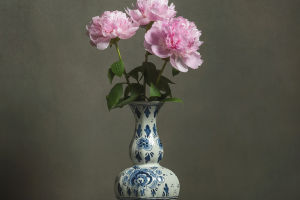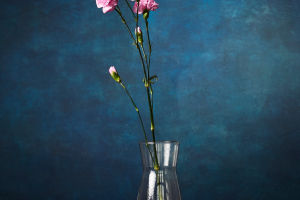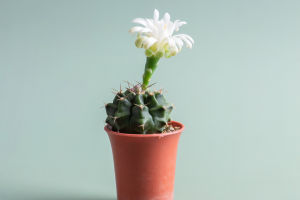Flowers are one of nature's most beautiful creations, symbolizing a wide range of human emotions and cultural expressions.
Whether in poetry, painting, music, or the everyday moments of life, flowers adorn our world with their unique shapes and fragrances.
They are not only a miracle of nature but also a balm for the human soul. Flowers captivate countless eyes with their vibrant colors and varied forms, evoking reflection on the essence of life.
First, flowers symbolize the changing seasons. In spring, as flowers bloom, they herald the renewal of life. The earth awakens from the stillness of winter, and everything comes back to life. Flowers are one of the most intuitive signs of this renewal.
From the first cherry blossoms gently swaying in the breeze to the blooming of roses, tulips, and lilies, flowers not only represent the arrival of spring but also signify the continuity of life. In summer, flowers and trees thrive, radiating boundless vitality and hope.
In autumn, as temperatures drop, some flowers begin to wither, yet chrysanthemums bloom defiantly, embodying resilience. During winter, although most flowers and plants wilt, they quietly harbor the promise of spring’s return. The cycle of the seasons, reflected in the life cycle of flowers, serves as a poetic expression of time.
Flowers also play an indispensable role in human culture. In both Eastern and Western traditions, flowers carry profound symbolic meanings.
In Chinese culture, the plum blossom, orchid, bamboo, and chrysanthemum are revered as the "Four Gentlemen," symbolizing nobility, resilience, aloofness, and elegance, respectively.
The plum blossom braves the cold, representing perseverance in the face of hardship. The fragrance of the orchid symbolizes grace and seclusion. Bamboo, with its upright and unyielding stance, is seen as a metaphor for integrity and the pursuit of justice.
The chrysanthemum, which blooms proudly in the autumn winds, signifies transcendence, tranquility, and far-reaching aspirations. In Western culture, flowers, too, bear rich symbolism.
The rose, for instance, is deeply intertwined with love. Different colors of roses convey different emotions: red for passionate love, white for purity and reverence, and yellow for friendship and well-wishes.
Beyond their cultural significance, flowers hold a special place in our everyday lives. They constantly express unspoken emotions, whether through a wedding bouquet, a birthday gift, or even a funeral wreath.
Each flower has its unique language, allowing people to communicate feelings that words cannot always capture. Bouquets can express love, gratitude, apologies, or even grief.
Different occasions and floral arrangements tell unique stories and convey distinct moods. Whether it’s in an urban nook or a rural field, flowers add a sense of color and poetry to life.
In modern society, the use of flowers has expanded significantly. In addition to beautifying our surroundings, they now play important roles in fields like environmental conservation, technology, and medicine.
For instance, floral essential oils and extracts are widely used in cosmetics, pharmaceuticals, and perfumes. Lavender, for example, not only helps to calm the nerves but is also used in treating insomnia.
Rose essential oil, known for its skincare benefits, is another popular example. Moreover, there is increasing evidence supporting horticultural therapy, which promotes mental health through planting and caring for plants.
This therapy has emerged as an effective treatment for various psychological issues. The beauty of flowers not only pleases the eye but also offers solace to the heart.
Whether in the natural cycles of the ecosystem or our daily human lives, flowers have a unique way of influencing us, bringing endless beauty and wisdom.
In a complex world, flowers remain a symbol of purity and serenity. No matter how life evolves, the beauty of flowers invites us to pause and contemplate the true meaning of existence.


